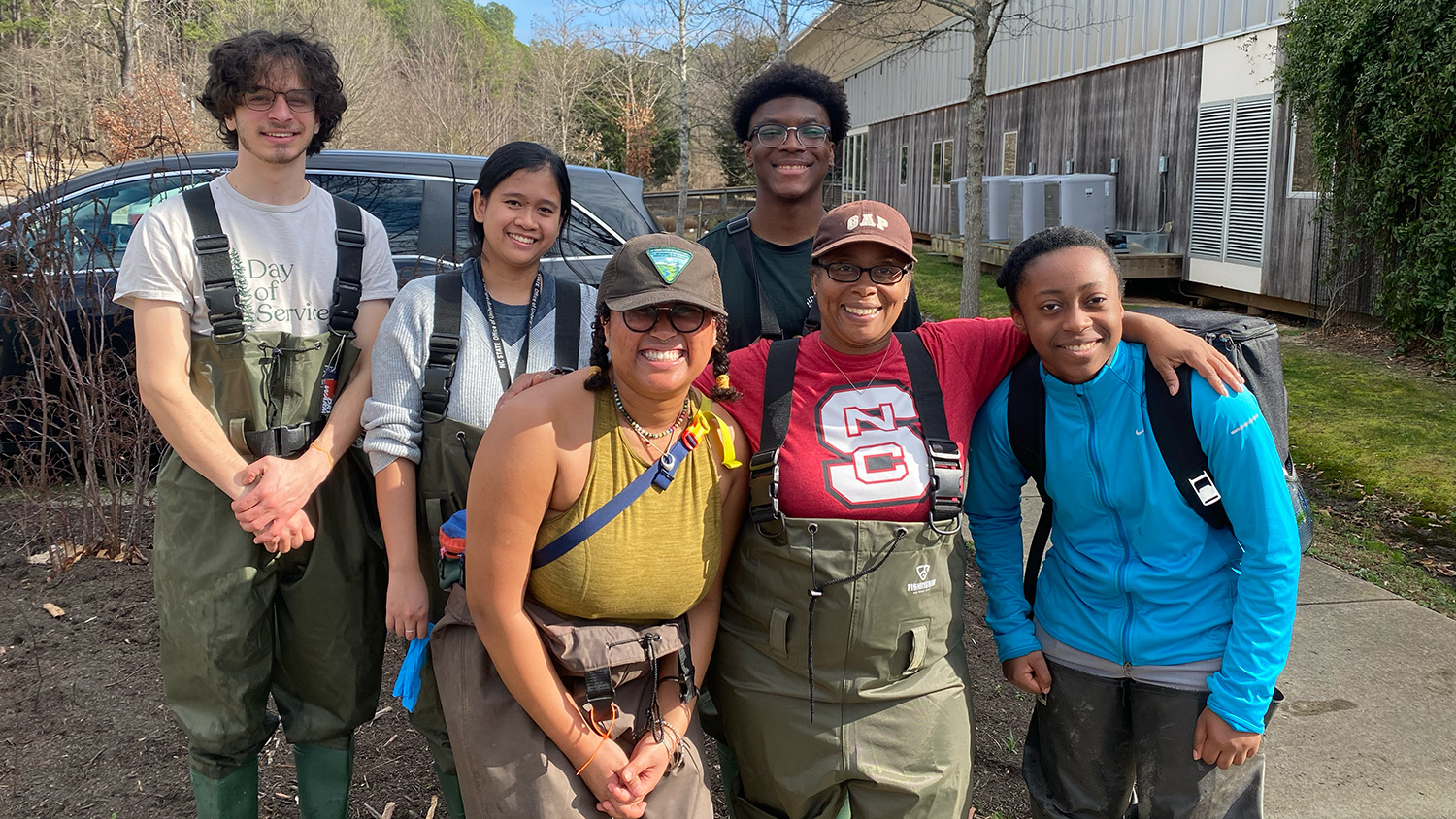NC State Researchers Use Big Data to Boost Public Engagement in Urban Planning

Imagine solving urban problems by competing online with the neighborhood across town or the city next to yours. Researchers at NC State’s Center for Geospatial Analytics are making urban planning a lot more fun these days, and they’re using a participatory approach to do it.
Participatory modeling — the co-development of scientific models with the public and all involved stakeholders — replicates specific problems and the real needs of those who are impacted. The goal is incorporating their voices in problem-solving efforts from the very beginning, before putting policies and solutions in place.
Ross Meentemeyer, director of the Center for Geospatial Analytics, is leading a participatory modeling project, funded by the National Science Foundation, to explore solutions to stormwater challenges. Meentemeyer and his team — with stakeholders in the Triangle region of North Carolina — are co-developing a game called “TomorrowNow.” This game employs real data, real science and real geography — a virtual experiment that allows stakeholders to come together and see the tradeoffs of urban planning choices.
Typically, city leaders and developers have significant input in urban development. But “TomorrowNow” gives a greater diversity of people a voice. Everyday people now only need a smartphone and an internet connection to give their input.
Built similarly to games like SimCity, “TomorrowNow” uses real landscapes, letting users see the real effects of development decisions. They can see a flooded area and then add a house or parking lot, for example, to understand how structures and surfaces affect — and are affected by — stormwater. Users can also apply intervention strategies to learn what solutions may work best in a specific area.
Corey White, the network coordinator for “TomorrowNow,” sums it up: “In the game, players will be able to shape the outcome of simulations backed by real-world data—allowing them to test their own ideas in a fun and engaging way.”
Conservation and Urban Development
Similarly, in St. John’s Island, South Carolina, Jelena Vukomanovic, a faculty fellow at the Center for Geospatial Analytics and assistant professor in the Department of Parks, Recreation and Tourism Management, is applying geospatial participatory modeling to help residents find ways to conserve ecosystem services and valued locations in the face of increasing urban development.
With funding from the Donnelly Foundation, Vukomanovic and her team are conducting workshops to map the natural resources of the island. They’re looking for what’s valuable and where it’s located and using feedback from stakeholders to improve land-change models.
Vukomanovic emphasizes the significance of the participatory approach: “We can come up with new better models, but without considering people’s concerns, all we’ll have are big, better models that stay in the ivory tower. This approach is a really important frontier. It’s actionable and useful to stakeholders.” And that’s part of why it matters so much.
Meentemeyer adds: “It’s an effective tool for empowering meaningful civic engagement. It’s disruptive to the status quo of how people engage in decision-making. This work puts science and technology in people’s hands and democratizes decision-making. It allows recognition of lots of different scenarios and the tradeoffs between groups with different values, helping everyone to visualize others’ perspectives and environmental impacts.”
A Toolkit for the Future
Meentemeyer and his team are gathering feedback from a diverse group of stakeholders who care about stormwater problems in the Triangle. With the stakeholders’ input, the researchers will develop a “TomorrowNow” prototype and refine it until it’s developed enough that urban leaders might consider it a legitimate decision-making tool.
Meetenmeyer recognizes the uniqueness of the Triangle, with so many intertwining municipalities. “What happens in one clearly affects the other,” he says.
He hopes “TomorrowNow” can lead to a toolkit for other cities to see how they affect each other, using water resources as a framework to demonstrate that.
On St. John’s Island, geospatial participatory modeling is leading toward improved land-change models and a potentially long-term collaborative research program.
The work will contribute to a conservation toolkit to support decision-making. It will also help local leaders determine where sticking points are so all stakeholders can agree on workable solutions that are good for the community and its surrounding environment.
Post by Julie Johnson
- Categories:


